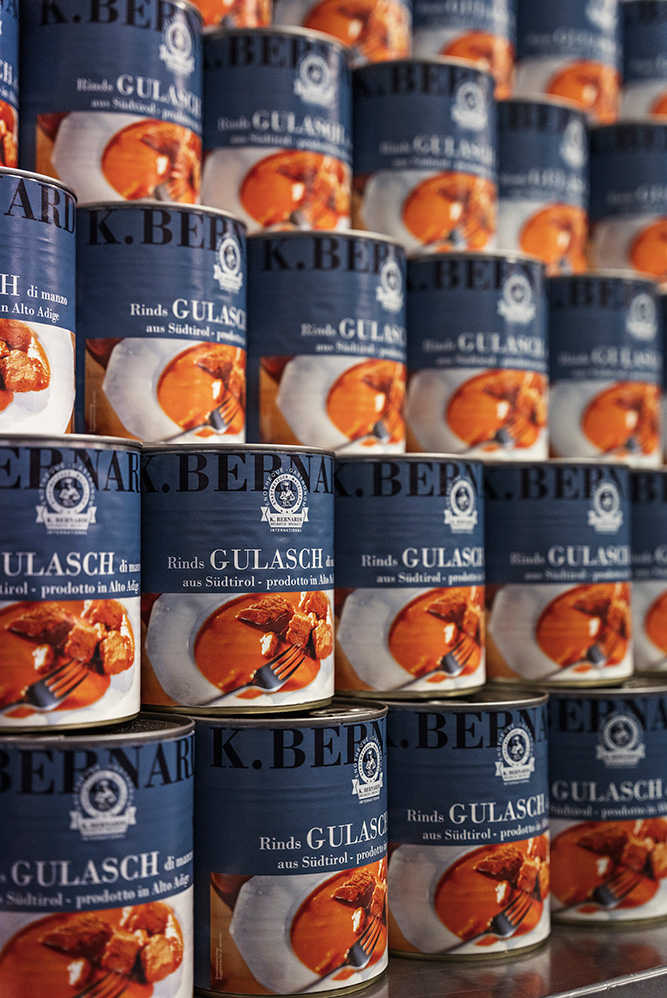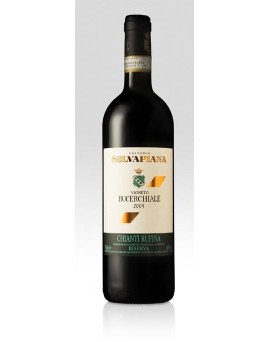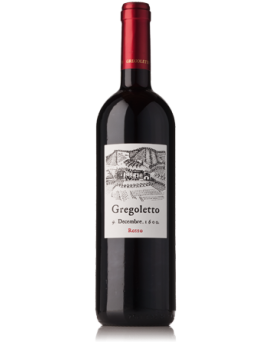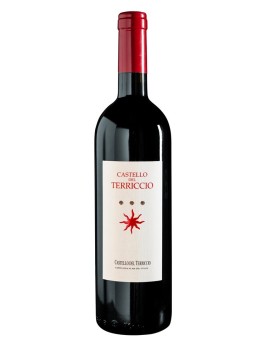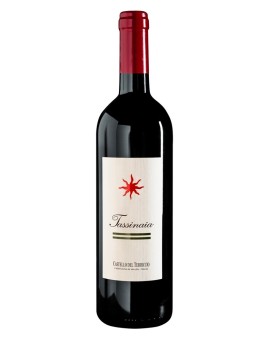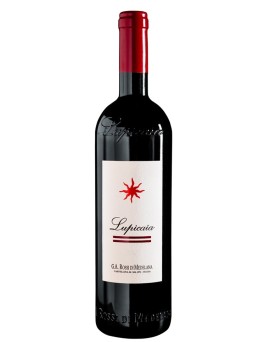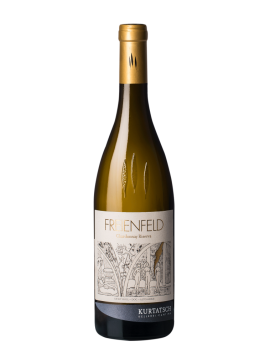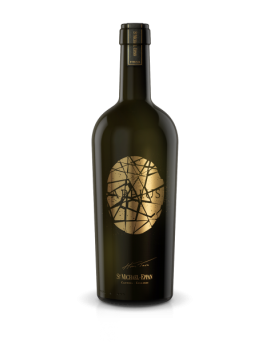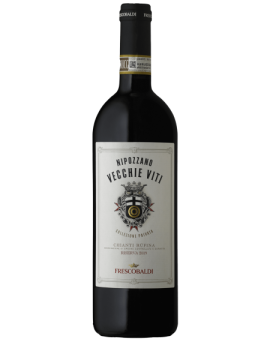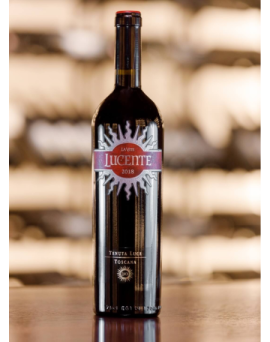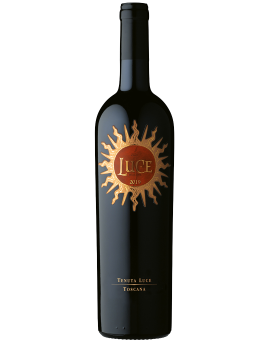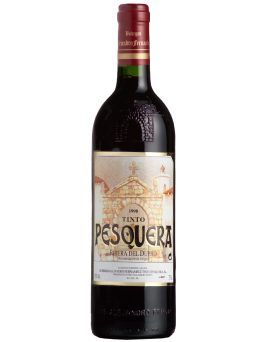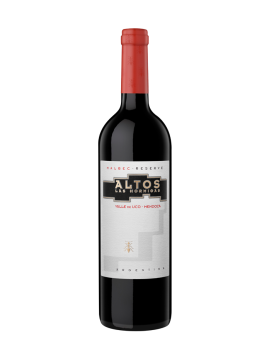Basket
0
Active filters
Colli di Conegliano rosso...
GREGOLETTO<br />GREGOLETTO ROSSO DEI COLLI DI CONEGLIANO DOCG<br /><br />It has an intense ruby red colour with garnet reflections.<br />Fruity notes prevail in the bouquet, especially of red fruits, vanilla with hints of spices; in the mouth it is dry and harmonious, constantly tannic and ends with a pleasantly<br />bitterish aftertaste.<br /><br />Grapes: from the hills of San Pietro di Feletto.<br /><br />Grape varieties: Merlot 50%<br />Marzemino 10%<br />Cabernet Franc and Sauvignon 40 %.<br /><br />Average data: Alcohol 13% vol.<br /><br />Yield: 90 q/ha<br /><br />Acidity: 5.0 g/l<br />Suggestions: Serve at a temperature of 18°C<br />Goes well: with tasty meats and cheeses.<br /><br />Vinification: long maceration and maturation in large and small barrels for up to 6 months before sale (bottle ageing).<br />
Price
€30.70
Castello del Terriccio 2016...
CASTELLO DEL TERRICCIO 2016<br /><br />Denomination: I.G.T. Rosso Toscana (Castello del Terriccio)<br />Producer: Castello del Terriccio<br />First vintage: 2000<br />Grapes: Syrah, Petit Verdot<br />Analytical Data: 14% Vol.<br />Soil type: The soils are rich in iron minerals with the presence of stones and fossils. The perfect slope towards the Mediterranean sea, a unique reflection of the sun, a<br />gentle coastal breeze and plenty of sunlight promote a unique and exclusive ripening.<br /><br />Training system: Spurred Cordon<br />Planting density: 3,600 vines/Ha. for old vineyards; 5,600 vines/Ha. for new vineyards<br />Climatic trend: 2016 was certainly one of the most regular vintages of the last decade. Rainfall met the vines' needs punctually: abundant in March, regular in May and June,<br />important at the end of July and, finally, a warm and sunny August and mid-September. Temperatures were optimal: a mild end to the winter that had caused concern was<br />then regularised by a tenably cool spring that slowed down the development of the bunches, which then benefited from the hot but not torrid summer, with significant<br />temperature swings. Cluster growth was regular and optimal, production was good and ripening was perfect.<br /><br />Harvest period: Harvesting was strictly by hand and took place for the Syrah and Petit Verdot grapes from mid-September. After an initial selection in the vineyard when<br />harvested by hand, the grapes are carefully selected a second time on arrival at the winery on the sorting table.<br /><br />Winemaking notes: After manual selection on the sorting table, the grapes are gently destemmed and pressed, taking care not to break the skin of the berries. Alcoholic<br />fermentation takes place in stainless steel open-cap fermenters at a controlled temperature, with maceration of the grapes, for about 20 days. Daily dèlestages allowed the<br />extraction of the aromatic bouquet and the right balance<br />tannicity, with important structure that will allow long ageing.<br /><br />Ageing: The wine is aged in first and second passage French oak Tonneaux for a period of about 22 months and then blended and bottled.<br />
Price
€80.00
Tassinaia 2017 Castello del...
TASSINAIA 2017<br /><br />Denomination: I.G.T. Rosso Toscana (Tassinaia)<br />Producer: Castello del Terriccio<br />First vintage: 1992<br />Grapes: Cabernet Sauvignon, Merlot<br />Analytical data: Alcohol degree: 14.50%.<br />Soil type: The soils where the vineyards are located are characterised by various and composite morphologies with a strong presence of stones and fossils; the altitude is<br />between 100 and 300 metres above sea level, with south/south-west exposure.<br /><br />Training system: spurred cordon<br />Planting density: 5,600 vines/Ha. for old vineyards; 6,250 vines/Ha. for new vineyards<br /><br />Climatic trend: Autumn began with rain and temperatures above the seasonal norm, while December and January were very cold months with freezing day and night<br />temperatures accentuated by tramontana winds and a lack of rain. Spring was characterised by dry weather. Summer arrived as early as mid-May with temperatures above<br />the seasonal average, as did the summer months. The veraison began in mid-July and the climatic trend brought forward<br />the ripening times of the grapes. Harvesting began early (at the end of August for the Merlot grapes) and continued for the Cabernet Sauvignon grapes until the end of<br />September. Healthy, crisp and well ripened grapes resulted in musts that were not overly structured, characterised by good acidity and a higher alcohol content than in other<br />vintages. higher than in other vintages.<br /><br />Harvest period: The harvest began at the end of August and was characterised by characterised by healthy grapes and perfect veraison.<br /><br />Vinification notes: Extremely soft pressing and destemming. Fermentation in steel vats at a controlled temperature, with maceration of the grapes for about 9-12 days for the<br />Merlot and 12-15 days for the Cabernet. During fermentation subsequent pumping over and délestages.<br /><br />Ageing: Ageing takes place in separate masses for each variety, in French oak tonneaux of second and third passage for 16 months. After being blended and bottled it rests<br />a further 12 months in bottle before being marketed.<br />
Price
€32.20
Lupicaia 2016 Castello del...
LUPICAIA 2016<br /><br />Denomination: I.G.T. Rosso Toscana (Lupicaia)<br />Producer: Gian Annibale Rossi di Medelana,Vittorio Piozzo di<br />Rosignano Rossi di Medelana<br />First vintage: 1993<br />Grapes: Cabernet Sauvignon, Petit Verdot<br />Analytical data: Alcohol degree: 14.50%.<br />Soil type: The soils are rich in iron minerals with the presence of stones and fossils. Facing the Mediterranean Sea, they benefit from a unique reflection of the sun, a<br />moderate breeze from the coast and the abundance of sunlight promotes unique ripening.<br /><br />Training system: Spurred Cordon<br />Planting density: 3,600 vines/Ha for old vineyards; 5,600 vines/Ha for new vineyards<br /><br />Climatic trend: 2016 was certainly one of the most regular vintages of the last decade. Rainfall met the vines' needs punctually: abundant in March, regular in May and June,<br />important at the end of July and, finally, a warm and sunny August and mid-September. Temperatures were optimal: a mild end to the winter that had caused concern was<br />then regularised by a tenably cool spring that slowed down the development of the bunches, which then benefited from the hot but not torrid summer, with significant<br />temperature swings. Cluster growth was regular and optimal, production was good and ripening was perfect.<br /><br />Harvest period: Harvesting was strictly by hand and took place for the Petit Verdot and Cabernet Sauvignon grapes from mid-September. After an initial selection in the<br />vineyard at the time of manual harvesting, the Lupicaia grapes are carefully selected a second time on arrival at the winery on the sorting table.<br /><br />Winemaking notes: After manual selection on the sorting table, the grapes are gently destemmed and pressed, taking care not to break the skin of the berries. Meticulous<br />alcoholic fermentation takes place in our stainless steel open-cap fermenters at a controlled temperature with maceration of the grapes for about 20 days. Daily dèlestages<br />allowed the perfect extraction of the bouquet<br />aromas and the right tannic balance, with an important structure that will allow for long ageing.<br /><br />Ageing: Ageing takes place in new French oak tonneaux for a period of about 22 months followed by further ageing in bottles before release.<br />
Price
€153.80
Chardonnay DOC Freienfeld...
<br /><br />The Chardonnay Freienfeld, a blend of the best Chardonnay grapes, is only pressed in vintages with optimal weather conditions. Originality and near-natural cultivation are<br />the guidelines in the vineyard.<br /><br />The Chardonnay is characterised by stylish opulence, with lots of exotic fruit and delicate, highly refined toasty aromas. The complex bouquet is reminiscent of ripe citrus<br />fruits, coconuts and a hint of vanilla. Extract and acidity form a delightful balance. The taste is round, with velvety fruit and pleasantly integrated tannin. A complex, elegant<br />Chardonnay with great ageing potential.<br />Chardonnay FREIENFELD: the charming one.<br /><br />Grape variety: Chardonnay<br />Vinification: Fermentation in blond & medium toasted french barriques. Barriques followed by ageing (incl. bâtonnage) for 12 months without biology. Acid reduction. Fine<br />yeast ageing for 6 months in large oak barrels, min. 6 months bottle ageing.<br />Alcohol: 14,5 % Vol.<br />Total acidity: 5,8 g/l<br />Residual sugar: 2,0 g/l<br />Yield per hectare: 40 hl<br />Optimum age for drinking: 4-12 years<br />Method of cultivation: sustainable<br />Bottle size 0,75 l<br />
Price
€43.60
Südtiroler Weiß DOC Appius...
Appius<br /><br />2013<br /><br />Also the IV. The fourth edition of APPIUS, Hans Terzer's dream wine, remains true to the principle of its creator: 'to give the best expression to the respective vintage<br />through selection and targeted vinification of excellent grape lots': 2013 was characterised by a relatively late harvest, which brought us fully ripe grapes with very pithy<br />acidity, beautiful fruit and intense aromatics. The Cuvee with a main share of Chardonnay, is combined with shares of Sauvignon Blanc, Pinot Grigio and Pinot Blanc. The<br />result: a multi-layered complex nose with exotic fruit notes such as: Pineapple, papaya, passion fruit, but also hints of Williams pear and apple as well as slightly floral<br />notes. Dense and creamy on the palate with mineral acidity and a never-ending finish. A finesse-rich, elegant, but nevertheless very complex white wine in keeping with the<br />vintage, which promises extraordinary drinking pleasure even after many years.<br /><br />Eye: bright, clear straw yellow with green reflections.<br />Nose: complex scents / aromas of pineapple, papaya, passion fruit.<br />Taste: mineral, complex, immensely long finish<br /><br />Varietal description: Chardonnay (55%), Sauvignon (25%), Pinot Grigio, Pinot Blanc<br />Growing region: Site: selected vineyards in Eppan<br />Exposure: south-east / south-west<br />Soils: Calcareous gravel or moraine debris soils<br />Method of cultivation: Guyot<br />Vine age: 25 to 35 years<br />Harvest: end of September - beginning of October<br />Vinification: Fermentation, malolactic fermentation and ageing in barriques. Assemblage after almost one year and further maturation on the fine lees for three years in steel<br />tanks.<br />Yield: 35 hl/ha<br /><br />Wine data:<br />Alcohol content: 14 %<br />Residual sugar: 3 gr/l<br />Acidity: 5,40 gr/l<br /><br />Drinking temperature: 8-10°.<br />Ageing/potential: 10 years and more<br />Recommended consumption: Appius 2013 is an excellent companion to strong fish dishes such as turbot or monkfish, to a spicy risotto with seafood, but also to wild fowl<br />or discreet veal dishes.<br />
Price
€289.20
Vecchie Viti NIPOZZANO 2019...
Castello Nipozzano<br />Nipozzano Vecchie Viti 2019<br /><br />Chianti Rufina Riserva DOCG<br /><br />This wine, chosen by the Frescobaldi family to continue the tradition of reserving a Private Collection for its newborns, originates from the oldest vines of Castello Nipozzano,<br />endowed with a deep root system. Of great complexity and harmony, it is aged for 24 months in oak barrels in the ancient Tuscan tradition.<br /><br />Climatic trend: at Castello Nipozzano, winter 2019 was characterised by long periods of sunshine with low temperatures. Spring, on the other hand, was cool; the rains that<br />fell ensured good water reserves to face the hot summer days. The summer period was characterised by temperature fluctuations that helped to provide coolness during the<br />night, with the usual breezes from the slopes of the Apennines contributing in particular. The grapes were therefore accompanied to maturity by a combination of the warmth<br />of the sun and refreshing breezes; the bunches arrived at the harvest in perfect condition and the production expressed itself with wines typical of the area, marked by a<br />good<br />acid vein and silky tannins.<br /><br />Technical notes:<br />Varieties: Sangiovese and traditional complementary varieties<br />Alcoholic grade: 13.5%.<br />Maturation: 24 months in barrels<br /><br />Vinification and maturation: The grapes of Sangiovese and traditional complementary varieties, as soon as they were harvested, were immediately delivered<br />in the winery. Here, once destemmed, the spontaneous fermentation process took place in cement tanks. At the end of this, the wine remained in the vats to complete<br />maceration. Its journey continued in wooden barrels, where the wine remained to mature for the necessary time. The subsequent period in the bottle allowed for greater<br />balance of all the components, giving the possibility of fully appreciating its essence once the bottle was opened.<br /><br />Tasting notes: Vecchie Viti 2019 has a wonderful intense ruby red colour. On the nose one recognises floral hints of violet that are accompanied by more fruity notes of<br />black cherry, plum, blueberry and blackberry. Notes of pepper and cinnamon are also interesting along with hints of walnut and walnut husk. This is rounded off by the<br />wonderful and typical balsamicity accompanied by an elegant toastiness. On the palate, the acid-alcohol balance is impressive, the tannins are velvety.<br />The minerality perceived on the finish is also extraordinary. Good persistence.<br />
Price
€24.60
La Vite Lucente 750ml...
LUCENTE 2019<br /><br />Cold and sunny winter, the spring was characterised by low average temperatures and high rainfall, which allowed the creation of important water reserves in the soil. This<br />situation of low light and rainfall resulted in a slight delay in the vine's vegetative cycle. Flowering took place between the last days of May and the beginning of June. The<br />season then continued regularly, with a hot summer, without any particular temperature peaks, with some rainfall between the end of July and the beginning of August.<br />The mild September temperatures and good water reserves favoured a slow and regular ripening.<br /><br />Tasting Notes: The wine is an intense purplish red colour. The nose is characterised by notes of ripe red fruit, raspberries and sour cherries are joined by sensations of<br />vanilla and a light balsamic hint. On the palate the attack is soft, balanced, well supported by a pleasant freshness and smooth tannins, characteristics that together with<br />the sweet aftertaste give the wine length and persistence.<br /><br />Grapes: Merlot, Sangiovese<br />Harvest period: Merlot: 12 September, Sangiovese: 23 September<br />Sugar at harvest: Merlot: 252 g/l; Sangiovese 250 g/l<br />Total acidity at harvest: Merlot: 6.50 g/l; Sangiovese 7.05 g/l (in tartaric acid)<br />Fermentation tanks: stainless steel thermo-conditioned<br />Fermentation temperature: 28°C<br />Type of ageing container: partly new, partly used barriques<br />Length of ageing: 12 months<br />Analytical Data<br />Alcohol: 14.5% Vol.<br />Total acidity: 5.56 g/l<br />PH: 3,49<br />
Price
€34.40
Luce 750ml Tenuta Luce...
LUCE 2019<br /><br />The 2019 vintage was late and balanced. After a cold and sunny winter, the spring was characterised by low average temperatures and high rainfall, which allowed the<br />creation of important water reserves in the soil. This situation of low light and rainfall, mainly concentrated in the month of May, resulted in a slight delay of 10 days in the<br />vine's vegetative cycle. Flowering was evenly completed in the first week of June. The season then continued with a hot summer, without any particular heat peaks, with<br />some rainfall between the end of July and the beginning of August, which ensured a vigorous and efficient leaf apparatus. The mild temperatures in September and a good<br />level of hydration of the soils favoured a slow and regular ripening of the grapes, resulting in perfectly ripe tannins with high aromatic intensity and freshness. The harvest<br />began in sunny weather on 12 September with the first Merlot grapes, and continued with the Sangiovese in late September and early October. The wines are structured,<br />showing balance, power and great ageing potential.<br /><br />Tasting Notes: Luce 2019 shows an intense ruby red colour. The nose impresses with floral hints of violets and roses, accompanied by red fruits of raspberries and sweet<br />spices. In the mouth it is balanced and elegant, with an almost creamy texture, supported by silky, well-integrated tannins. The persistent finish lingers on spicy notes.<br /><br />Grapes: Merlot, Sangiovese<br /><br />Analytical Data:<br />Alcohol: 14.40% Vol.<br />Total acidity: 6.03 g/l<br />PH: 3,49<br />
Price
€140.60
Tinto Pesquera 2019 750ml
The bodega Tinto Pesquera is located in Pesquera de Duero, a village about 200 km north of Madrid, in the Ribera del Duero. This region is about 115 km long and takes its<br />name from the word ribera, which means cultivated fields near a watercourse. The soil is of alluvial origin characterised by the presence of clay, sand and infiltrations of<br />limestone and debris, while the climate is continental. In a cellar dating back to the 16th century, Alejandro Fernández created Tinto Pesquera in the 1970s: the name of his<br />winery, in a short time, embodied the renaissance of Spanish wine and especially Tempranillo. Tinto Pesquera is the result of Alejandro Fernández's close bond with his<br />land, Pesquera de Duero, so much so that his wine label features the town's symbols: its name, its tower and its arch. After alcoholic fermentation, the Tinto Pesquera<br />wines are not clarified and mature in French and American barriques for 18 months for the Tinto Pesquera and 24 months for the Reserva. In truly special vintages, the Tinto<br />Pesquera Janus Gran Reserva is produced, a single vineyard Tempranillo that is the epitome of elegance of this variety.<br /><br />Varietal: Tempranillo.<br /><br />Vineyards: The vineyards used to produce the Tinto Pesquera are located in Roa and La Horra (approximately 800 metres above sea level) in Ribiera del Duero. The soils are<br />heterogeneous, predominantly clay marl with the presence of limestone.<br /><br />Vinification: the wine ages 14 months in American oak barrels, then 6 months in the bottle before release.<br /><br />Characteristics: characterised by its brilliant colour, garnet hue, attractive and elegant. On the nose it has notes of red berries blending with balsamic hints. In the mouth it<br />is sweet, combining fruity hints with balsamic notes and liquorice.<br />
Price
€37.80
Malbec Riserva ALTOS Las...
Altos Las Hormigas was founded in Mendoza in 1995 by oenologist Alberto Antonini and entrepreneur Antonio Morescalchi, later joined by Attilio<br />Pagli and Carlos Vazquez. The property extends in the Mendoza region and in particular in the two subzones of Luján de Cuyo and Maipú, where the<br />first Altos Las Hormigas vineyards were planted in 1996. At present, the agronomic management of the land aims to protect the natural heritage of<br />the region, whose particular beauty is also due to the fact that it lies at the foot of Aconcagua, an Andean mountain, to the east of which the largest<br />portion of the estate faces. The nature of the soils is clay-limestone with alluvial sedimentation, and in some areas has sand and pebbles. The climate<br />of the region is characterised by dry periods and a marked temperature alternation: very hot days and cold nights. The winery currently covers an area<br />of 206 hectares, 40 of which are planted to Malbec and 6 to Bonarda. Harvesting is done manually and takes place in February and March. Altos Las<br />Hormigas wines are the result of little intervention in the cellar, aimed at enhancing the incredible heritage of Malbec vinified in purity.<br /><br />Varietal: Malbec.<br /><br />Vineyards: The grapes come from vineyards located on limestone soils in the Uco Valley, alluvial deposits of the Tunuyán River in Paraje Altamira and<br />Gualtallary. These terraces are characterised by the presence of medium to large gravel covered with calcium carbonate paste.<br /><br />Vinification: Malbec Reserve 2017 is made from hand-picked Malbec grapes.<br />During fermentation, excessive extraction is avoided and only indigenous yeasts are used. The wine matures for 22 months in 3,500-litre, unroasted<br />French oak barrels and then ages 12 months in the bottle.<br /><br />Characteristics: Malbec Reserve 2017 is characterised by spicy notes such as white and pink pepper, violets, graphite, red fruits, berries and underbrush.<br />Complex, long, it is an evolving wine in the glass with fine-grained structured tannins that linger long on the palate.<br />
Price
€40.00

